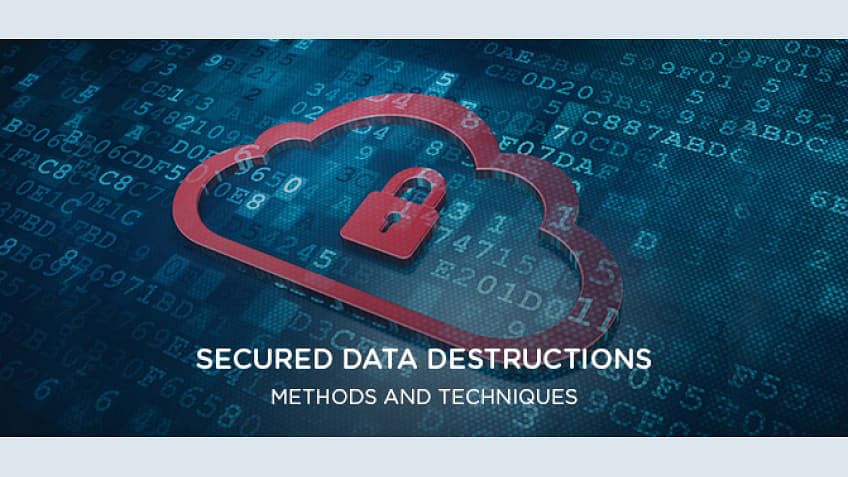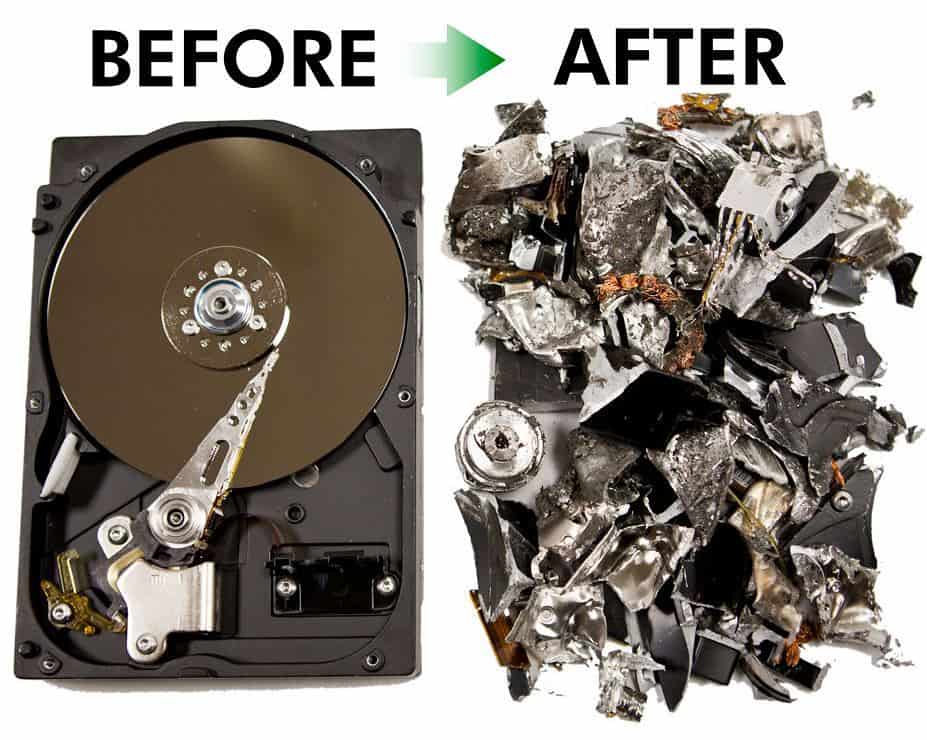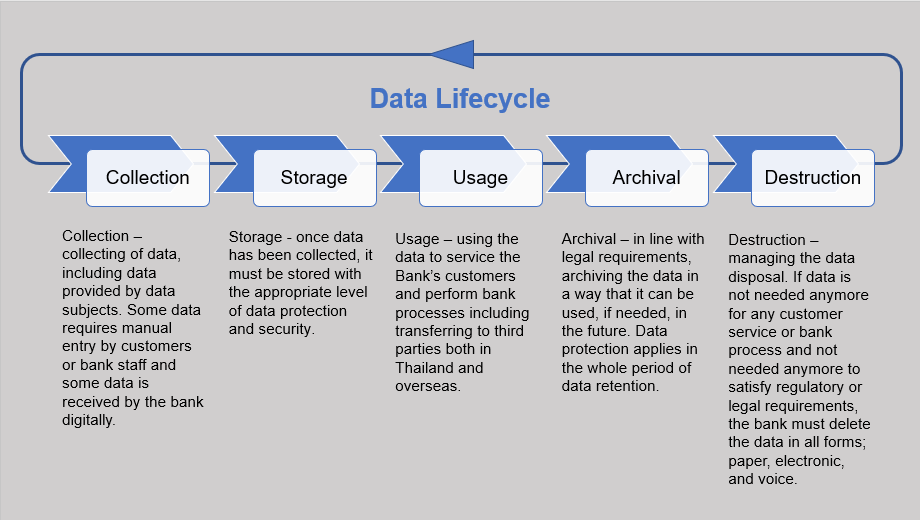Maximizing Cyber Security through Advanced Data Destruction Approaches
Maximizing Cyber Security through Advanced Data Destruction Approaches
Blog Article
Checking Out the Value of Data Devastation in the Context of Computer Security Services and Protecting Confidential Information
In an age where information violations are progressively typical, the relevance of efficient information destruction can not be overstated. Organizations must adopt rigorous actions to guarantee that delicate info is not only protected throughout its lifecycle yet likewise decisively removed when no longer required. The techniques used for data removal, paired with conformity to legal criteria, play an essential duty in preserving confidentiality and trust. Nonetheless, the ramifications of these techniques extend past simple conformity, affecting a company's track record and operational integrity in the digital industry. What methods can organizations carry out to improve their data damage methods?
Understanding Information Destruction
Data damage is a crucial element of computer system security that includes the irreversible elimination of data from storage gadgets to avoid unapproved access and potential data breaches. In a significantly electronic landscape, companies encounter heightened risks connected with delicate info being poorly accessed or made use of. Efficient information devastation safeguards versus these hazards, guaranteeing that private dataâEUR" such as client info, intellectual residential property, and economic recordsâEUR" can not be recovered after disposal.
Understanding the significance of data damage prolongs beyond mere conformity with lawful and governing structures; it is vital for keeping business stability and depend on. When information is incorrectly handled or improperly damaged, the effects can be serious, including financial loss, reputational damages, and lawful liabilities.

Methods of Data Obliteration

One common method is data cleaning, which involves overwriting existing data with arbitrary patterns numerous times. This technique makes the original information irretrievable, making it a popular choice for organizations looking for to safeguard confidential details.
An additional technique is degaussing, which utilizes an effective magnetic field to interrupt the magnetic domains on storage space tools, effectively removing the information. This approach is especially efficient for magnetic media however is not suitable to solid-state drives.
Physical damage is another robust approach, including the shredding or squashing of storage devices. This technique warranties that data recovery is essentially difficult, making it optimal for extremely sensitive info.
Finally, encryption can act as a complementary strategy to information eradication. By securing data before removal, companies can add an extra layer of protection, making certain that even if remnants are recuperated, they remain inaccessible without the decryption trick. Each technique ought to be chosen based upon the level of information sensitivity and the specific safety demands of the organization.
Legal Conformity and Data Protection
Organizations should navigate an intricate landscape of legal requirements connected to data safety, particularly after implementing techniques of data obliteration. Different laws, such as the General Data Defense Policy (GDPR) and the Medical Insurance Transportability and Responsibility Act (HIPAA), enforce strict guidelines on exactly how companies need to handle and get rid of of sensitive information. Failure to follow these guidelines can lead to significant lawful consequences, including substantial fines and reputational damage.
Information devastation procedures should be diligently documented to demonstrate compliance with relevant laws and criteria. This paperwork not only works as proof of adherence to legal responsibilities yet likewise highlights a commitment to safeguarding sensitive info. Organizations must additionally develop clear plans pertaining to information retention and destruction timelines, ensuring that data is not held longer than required.

Moreover, regular audits and assessments of information devastation methods are important to preserve compliance and adapt to evolving lawful frameworks (data destruction). By proactively dealing with legal needs, companies can mitigate threats linked with data breaches and show their dedication to data security. Ultimately, prioritizing lawful conformity in data devastation processes is not just a governing responsibility, however a basic element of a robust information safety and security strategy
Influence On Service Track Record
The credibility of a business can be dramatically affected by its approach to information damage and management. In today's electronic landscape, where data violations can happen at any kind of moment, the failing to correctly throw away sensitive details can lead to extreme repercussions. Organizations that improperly manage data devastation risk revealing confidential client details, which not only violates privacy regulations but likewise erodes count on amongst stakeholders and clients.
A damaged reputation can lead to reduced customer loyalty, as customers come to be hesitant to involve with a service that has actually demonstrated neglect in securing their information. content Moreover, adverse attention surrounding a data violation can have a long lasting effect, as possible consumers might be hindered by the perceived absence of protection. This can lead to a direct decline in income and market share.
Furthermore, services that focus on data destruction as part of their safety and security technique can improve their track record by showcasing their dedication to securing sensitive information. By adopting stringent information monitoring techniques, companies can not just mitigate risks but also place themselves as reliable entities in their corresponding markets, consequently reinforcing their total brand name picture.

Best Practices for Secure Disposal
Implementing ideal techniques for protected disposal of data is crucial for alleviating risks related to information breaches and guaranteeing conformity with personal privacy regulations. Organizations needs to embrace a comprehensive information disposal policy that lays out treatments for both physical and electronic data devastation.
For physical data storage space gadgets, such as hard disks, shredding or degaussing is suggested to stop data recuperation. Additionally, companies should keep a chain of wardship paperwork during the disposal process, making certain responsibility and traceability of disposed things.
For digital information, using software that sticks to sector criteria for data wiping is crucial. This software application needs to overwrite existing data numerous times, making recovery practically difficult. It is also vital to validate the efficiency of the information devastation procedure through audits or third-party assessments.
Training staff members on safe and secure disposal practices includes another layer of safety and security, as human mistake can typically bring about data direct exposure. Frequently upgrading and assessing disposal policies ensures placement with developing laws and technical developments. By carrying out these ideal practices, organizations can substantially lower the threat of unapproved information accessibility and enhance their total information defense strategy.
Final Thought
In verdict, information destruction is a basic facet of computer system security solutions that makes certain the security of private info from unauthorized gain access to. Executing effective methods of information obliteration, adhering to lawful compliance, and recognizing the effect on organization online reputation are crucial parts of a detailed data safety technique. By adopting ideal methods for protected disposal, organizations can cultivate depend on with customers and secure sensitive information, eventually adding Related Site to an extra safe digital landscape.
In a period where data breaches are increasingly typical, the importance of click here to find out more reliable data devastation can not be overemphasized.Data destruction is a vital component of computer system protection that includes the permanent removal of data from storage devices to prevent unapproved access and potential information breaches. Organizations needs to likewise establish clear policies pertaining to data retention and destruction timelines, making certain that data is not held longer than necessary.
By proactively addressing lawful requirements, companies can mitigate threats associated with data violations and demonstrate their commitment to information security (data destruction). Eventually, prioritizing lawful compliance in data devastation processes is not just a governing commitment, but a basic element of a durable data safety and security approach
Report this page